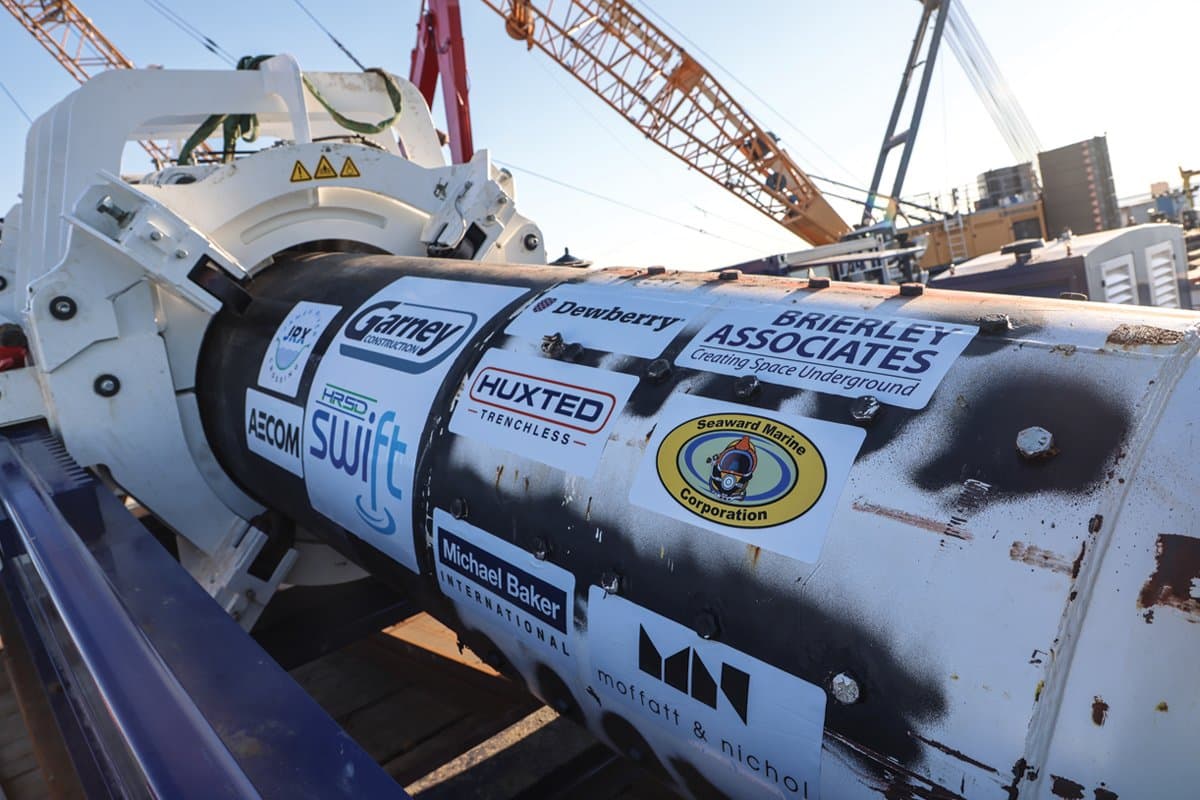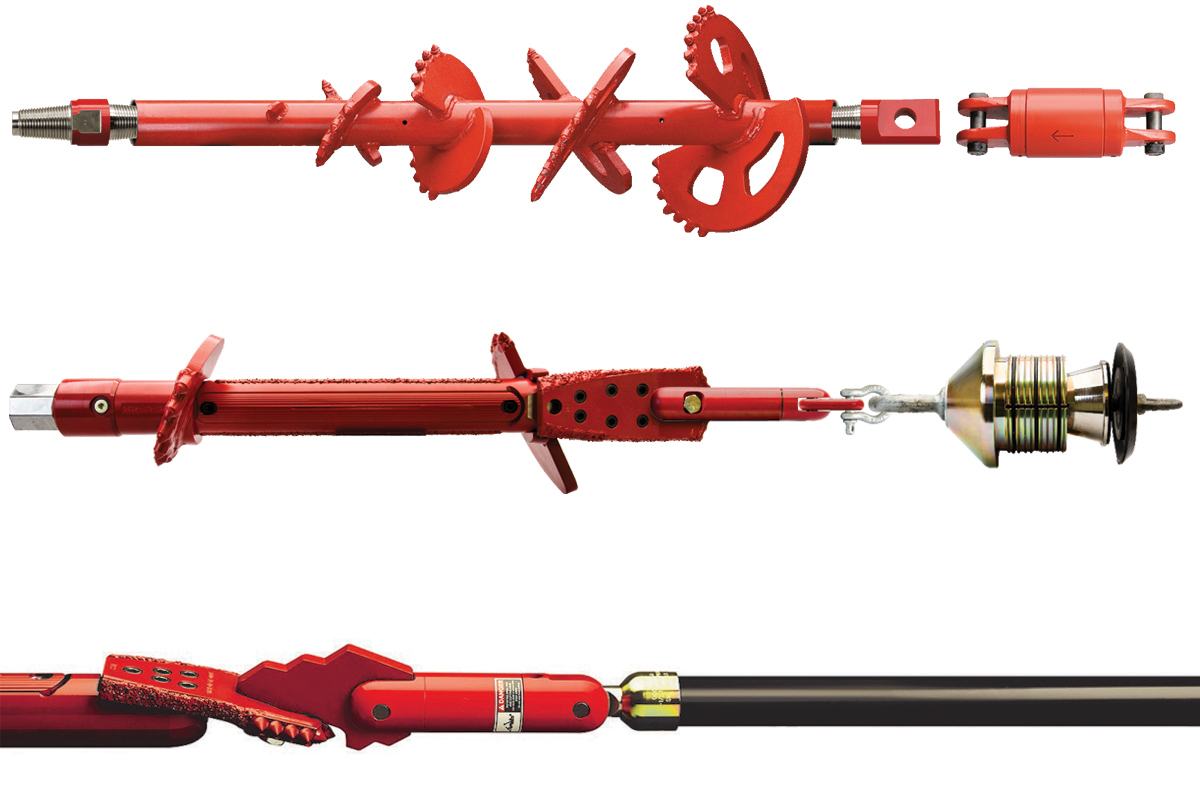Know Your Bits
November 14, 2014
Choosing the correct bit is one of the most critical decisions a driller makes
HDD rock drilling brings with it a number of technical challenges. The bidding process alone is challenging because oftentimes the customer who is requesting bids has little information available about ground formations. Many drilling contractors find themselves conjecturing about what kinds of conditions they will encounter on many jobs, especially when they’re unfamiliar with the area.
Tooling up opportunely for a job in an unfamiliar area can mean the difference between making money and losing money on the contract.
Choosing the correct bit is one of the most paramount decisions a driller has to make. The effectiveness of a drill bit varies by formation type. There are three types of formations: soft, medium and hard. A soft formation includes clays, red beds, shale, soft limestone and unconsolidated sands. Medium formations include calcites, dolomites, hard shale and limestone. Hard formations include calcites, cherty limestone, hard shale and mudstones. Knowing your options and what formations each type of bit is designed to drill is essential to the prosperity of a job or time and money wasted.

Knowing your options and what formations each type of bit is designed to drill is essential to the prosperity of a job or time and money wasted.
Traditionally, drilling companies have used tri-cone or rotary cone bits. Specialists from the Sharp-Hughes Tool Co. produced the tri-cone bit in 1933, using the organization’s two cone bits as a base outline. The fundamental idea, which underpins the proficiency of rotating cone drill bit, is the dual axis action of the bit. At the point when boring, the bit body rotates, while the heads themselves spin at an angle different form the body. Tri-cone bits consist of a cylindrical-shaped bit body furnished with three mounting heads organized in a cloverleaf design around its body. The bit heads are cone shaped and outfitted with bearings that guarantee smooth pivot under heavy loads. The heads are connected to the bit body at approximately 45 degrees with their peak facing the center. Each head has several concentric rows of teeth which structure the bearing or cutting points of the bit.
There are two essential bit head tooth designs used on the tri-cone bit: Insert and mill tooth. The insert tooth is a cone shape while the mill tooth has a flat wedge shape. At the point when turned under weight against the rock face, the teeth cause a smash sort of disappointment of the material bringing about a layer of rock to be sheared away at every pivot of the bit. Some problems that you may run across when using these bits are: When the teeth on the heads are worn or broken, the heads are usually discarded. Another issue with these types of bits is losing the heads (cones) in the hole from bearings locking up.
Since there are a number of types of cone cutters (designed to cut variants of rock), a problem arises when the bit transitions from one layer of rock formation to another (for example: from limestone to shale to clay to dirt). Since there is not a cone cutter in existence that is designed to cut rock formations of varying hardness, the driller is forced to choose the cutter type for the rock he/she thinks they will be in more than the others. In many cases, the driller has no choice but to use multiple types of bits and hole openers to accommodate the changes in layers.
 By using a PDC (Polycrystalline Diamond Compact) bit, the cost of rig standby time can be significantly reduced because fewer trips of the bits in the hole are needed. The PDC hole opener offers an improved process for enlarging and cleaning the pre drilled pilot hole for future installation of (including but not limited to) gas pipeline, waterline, sewer line, telecom products, etc. The PDC hole opener is a drill bit that can either be pulled or pushed, while being rotated, by an HDD drilling rig through the predrilled pilot bore. As the drilling rig rotates the bit, the PDC cutters scrape and cut the rock formation. As the PDC cutters shear the rock, nozzle ports that are installed in the junk slots of the bit are situated in a specific configuration that allows the drilling rig to pump drilling fluid through, thereby flowing the rock cuttings back to the surface.
By using a PDC (Polycrystalline Diamond Compact) bit, the cost of rig standby time can be significantly reduced because fewer trips of the bits in the hole are needed. The PDC hole opener offers an improved process for enlarging and cleaning the pre drilled pilot hole for future installation of (including but not limited to) gas pipeline, waterline, sewer line, telecom products, etc. The PDC hole opener is a drill bit that can either be pulled or pushed, while being rotated, by an HDD drilling rig through the predrilled pilot bore. As the drilling rig rotates the bit, the PDC cutters scrape and cut the rock formation. As the PDC cutters shear the rock, nozzle ports that are installed in the junk slots of the bit are situated in a specific configuration that allows the drilling rig to pump drilling fluid through, thereby flowing the rock cuttings back to the surface.Rate of penetration (ROP) is always a major issue for boring contractors. Low ROP (for example, 3 to 5 ft per hour) is primarily a result of the high compressive strength of the highly overburdened formations. Initially, the tri-cone bits with hardened inserts used for drilling hard formations at shallower depths were applied as wells went deeper. However, at deeper depths it is harder to know when a tri-cone bit’s bearings have failed, a situation that can occur more frequently when more weight is applied to the bit in a deep well. This can lead to timely failures, lost cones, more frequent trips, higher costs and lower overall rates of penetration. A PDC drill bit can triple the rate of penetration due to extended hours of bit life, no moving components, less wear and tear on rigs.
In addition to the increased rate of penetration, the DDI Volcano PDC Hole Opener/Reamer solves several other major issues that HDD drillers continually face:
 Loss of Cone Cutters Down Hole
Loss of Cone Cutters Down Hole• It is a common occurrence for drillers to lose cones from their tri-cone reamers. This happens for a variety of reasons. Whether it is poor construction of the tool, overuse or other extenuating circumstances, cone loss is a constant and looming threat. Having this happen on a bore can be catastrophic. This causes the need for the drilling company to either fish out the lost cone, and in some cases, start the bore again from scratch. All of this is done at the cost of the drilling company.
• Since there are no moving components on the DDI Volcano PDC Hole Opener/Reamer, there is nothing to break and fall off down hole.
Fuel Usage
• The longer a drilling company spends on a jobsite and more support vehicles that are needed, fuel costs can soar into the hundreds of thousands of dollars. A bit with a slow rate of penetration only elongates the duration a drilling company spends onsite.
• Recent figures have shown a 40 to 60 percent fuel savings while running the DDI Volcano PDC Hole Opener/Reamer. The faster rate of penetration, the greater the fuel savings.
Labor and Housing Costs
• Both labor and housing costs follow the same logic as in the fuel usage example. The longer a company spends on a job, the more their labor and housing costs.
• If a company can shave days or weeks off of their job, the savings are enormous.
With no moving parts, PDC Bits and PDC Hole Openers can be used in a variety of conditions without the fear of losing cones or parts in the hole. They can be custom manufactured and are available in a wide range of size and thread combinations to meet specific project requirements.
The advantages of using a PDC Bit and PDC Hole opener include:
• Better Performance
• Smoother Drill Operation
• Integral Design
• No Weld-On Components
• No Moving Parts
Mike Magee is sales manager and Shannon Houk is marketing manager at Diamond Drilling Industries, Mansfield, Texas.





Comments are closed here.